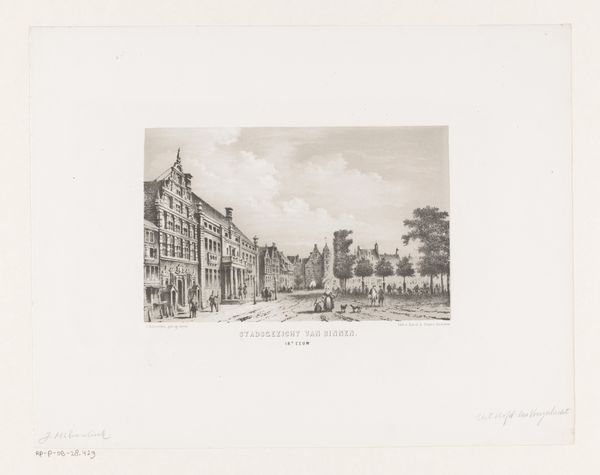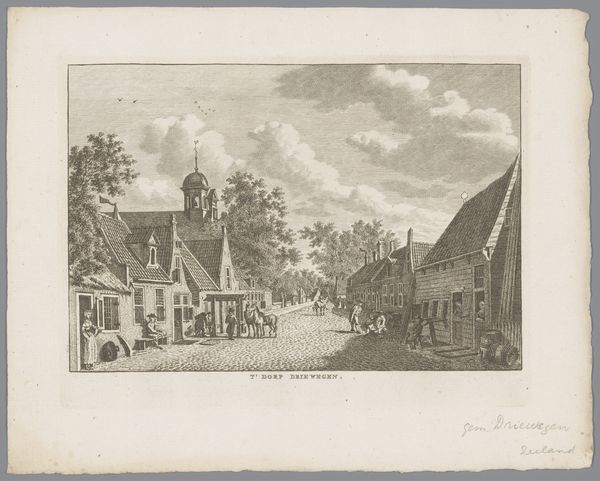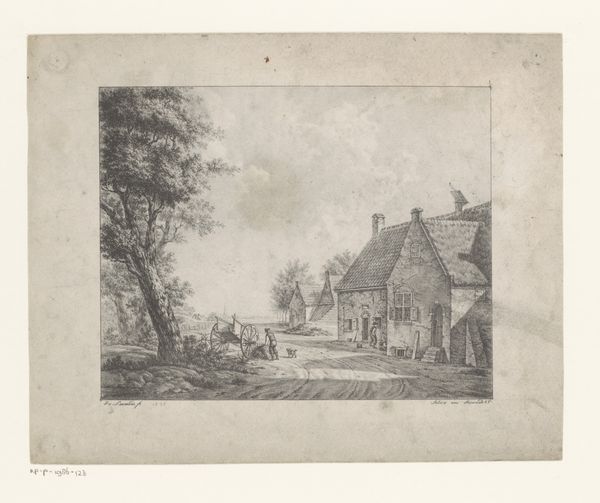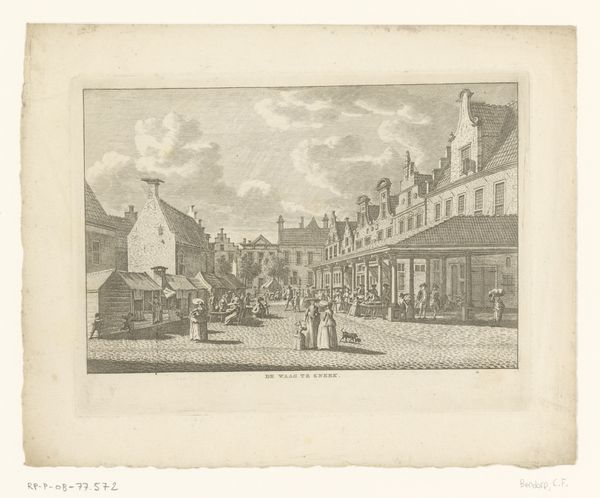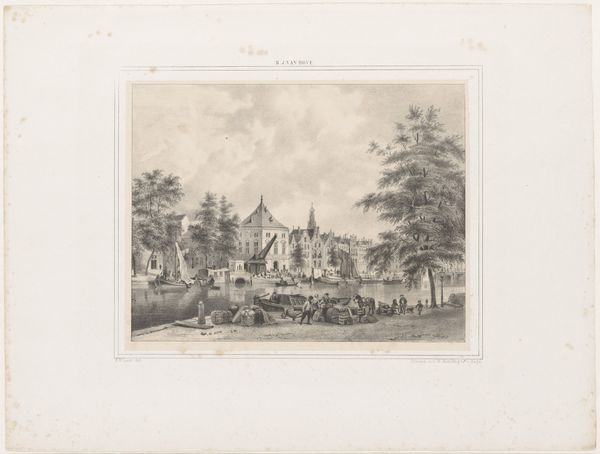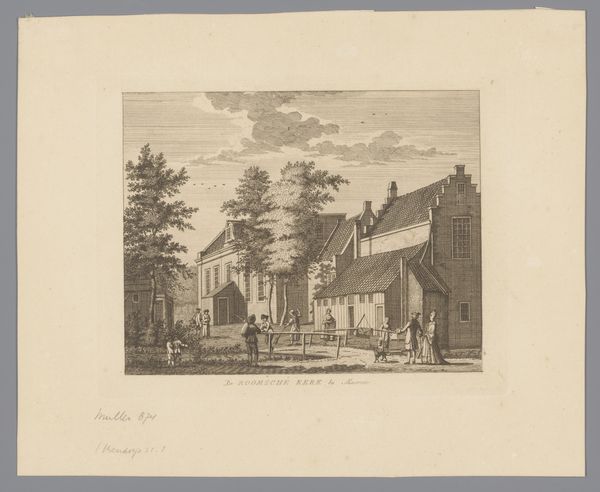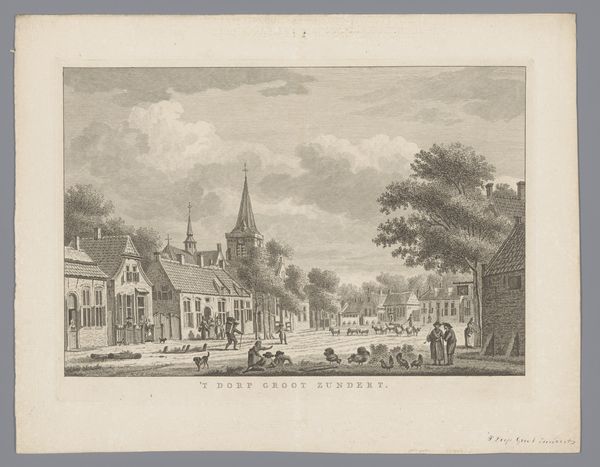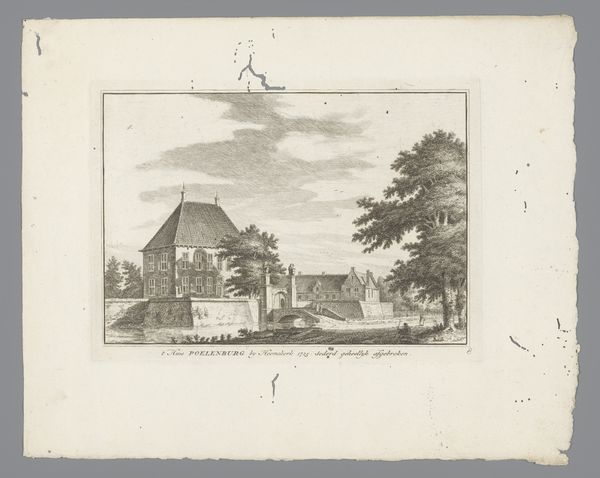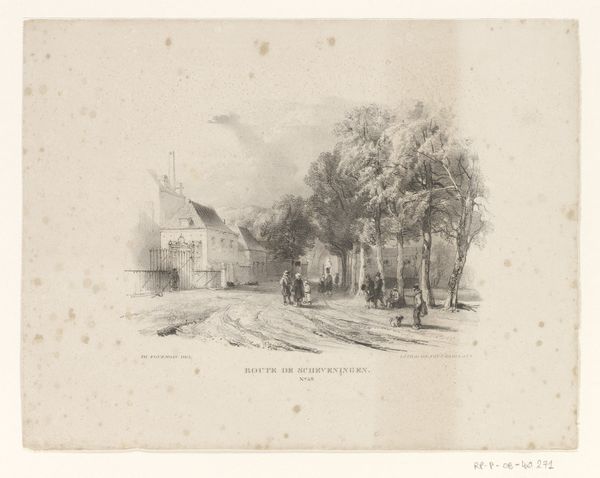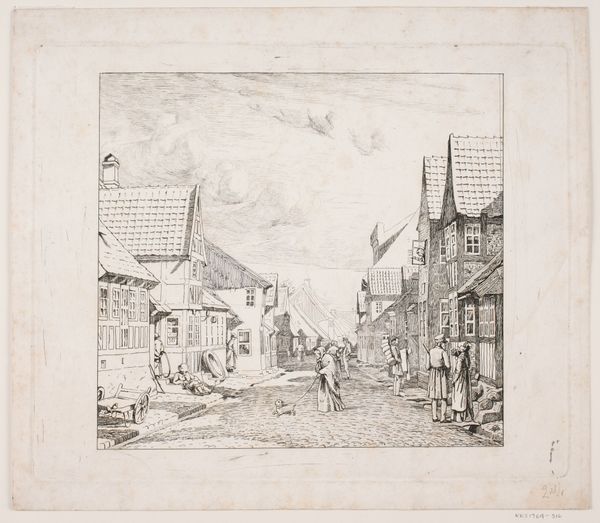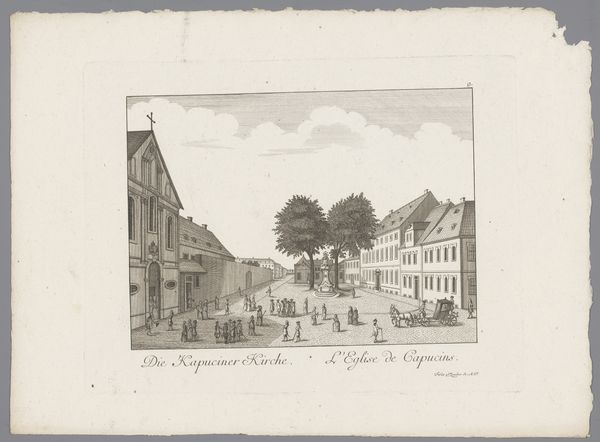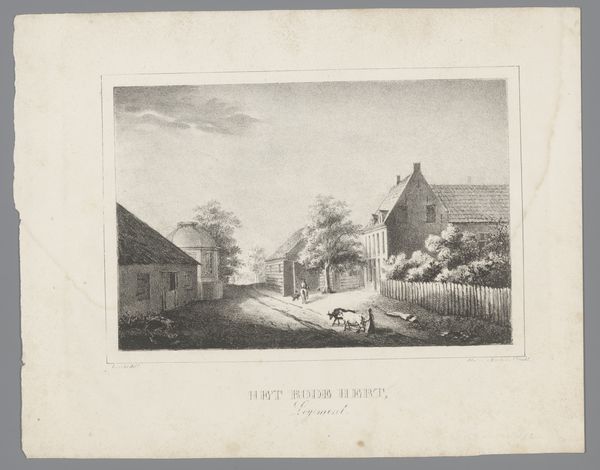
drawing, print, pencil, engraving
#
drawing
#
aged paper
#
light pencil work
# print
#
light coloured
#
old engraving style
#
sketch book
#
landscape
#
personal sketchbook
#
romanticism
#
pencil
#
ink colored
#
sketchbook drawing
#
cityscape
#
watercolour illustration
#
sketchbook art
#
engraving
#
realism
Dimensions: height 224 mm, width 284 mm
Copyright: Rijks Museum: Open Domain
Editor: Here we have "Dorpsgezicht te Amerongen" – or, "Village View of Amerongen" – a drawing made with pencil, print, and engraving by Marinus Adrianus van Straten sometime between 1828 and 1830. There's something so delicate and fragile about it; the aged paper really highlights that. What draws your attention in this piece? Curator: For me, it’s the interplay between the means of production – the deliberate marks of the pencil, the etched lines of the engraving – and the representation of everyday life. Consider the labor involved: from the artist meticulously rendering each detail to the printer reproducing the image for wider consumption. This piece exists within a network of labor, materiality, and exchange. Editor: I see what you mean. I was focused on the image itself, the buildings and the figures... Curator: But shouldn't we also consider what it meant to depict and disseminate such scenes? Engravings, prints, they were commodities, made possible through specific technologies and satisfying particular demands. This image, for example, might speak to a rising interest in the local, the picturesque, a romanticized vision of rural life that belies the realities of labour and the economic shifts happening at that time. What stories does it fail to tell? Editor: So you’re saying the focus shouldn’t just be on what’s shown, but how it was made and why? How its existence is embedded in the industrial processes of the day? Curator: Exactly! It’s not just a quaint village scene, but a material object that participated in and reflects the cultural values and socio-economic structures of its time. How does the act of reproducing this scene influence its value, and ultimately, our understanding of it today? Editor: That definitely changes my perspective. I'll never look at a "simple" drawing the same way. Thank you! Curator: Likewise! Examining the processes of art, reveals new insights on how artists engage with society.
Comments
No comments
Be the first to comment and join the conversation on the ultimate creative platform.
